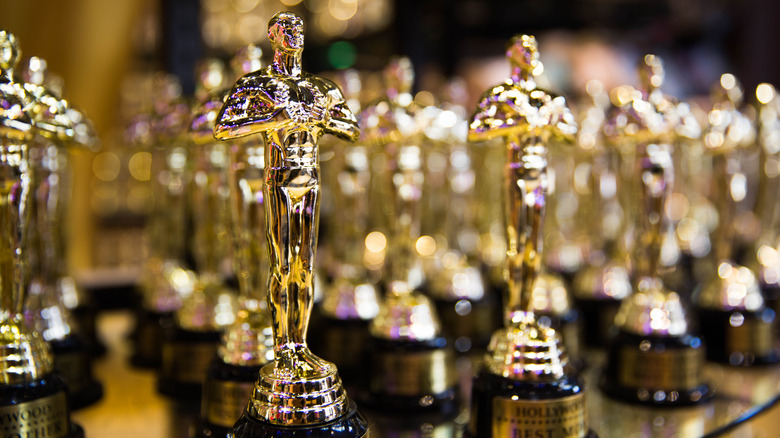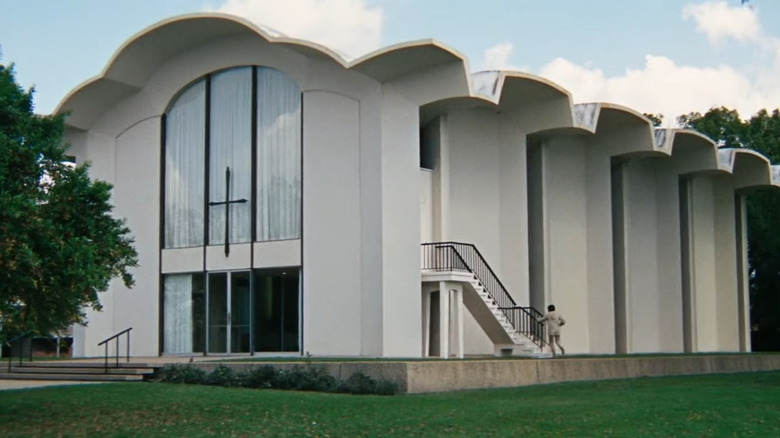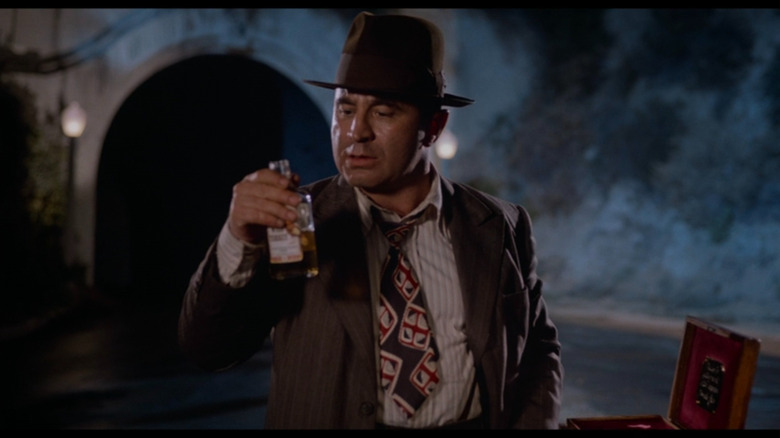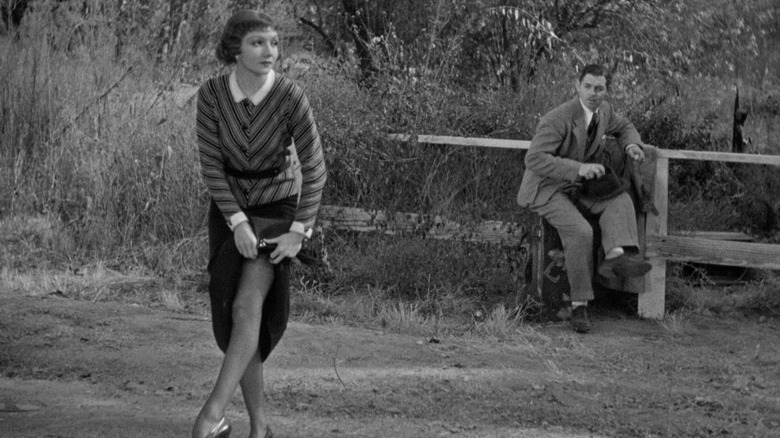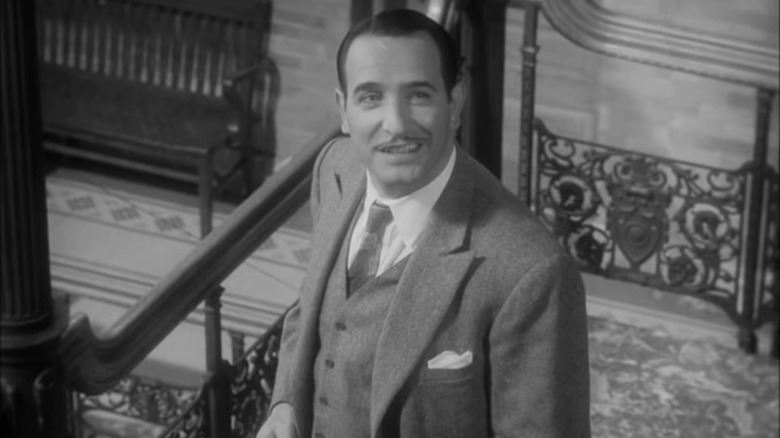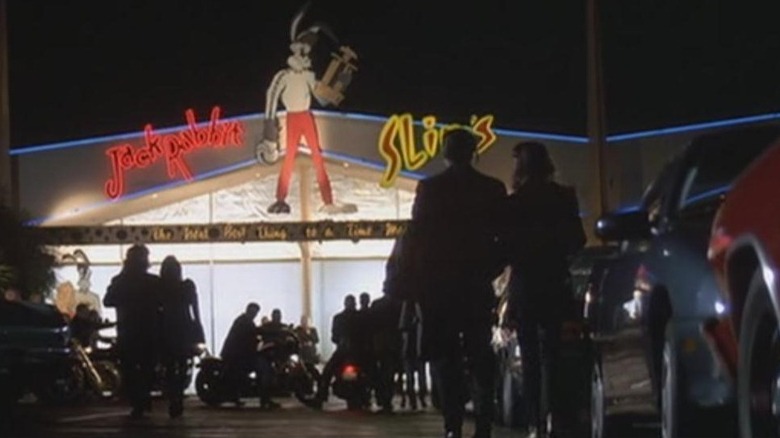Celebrate Awards Season In California By Visiting These Oscar-Winning Film Locations
On Sunday, March 10, 2024, the film industry will assemble in Hollywood, California, for the 96th annual Academy Awards, where the best films of the year and the people who made them will be honored by their peers. For many movie fans, this is their Super Bowl, World Cup, or Wrestlemania. But not everyone celebrates the same way.
Whether you are attending the ceremony in person or inviting everyone over to watch on TV, you could dress to the nines and show off some stylish formal wear to mark the occasion. For the more competition-driven crowd, maybe you have arranged some kind of betting pool to determine the night's winners. Or you could celebrate by just having a good old-fashioned movie night and finding out the winners afterward.
Alternatively, you could visit the locations where some of the most beloved films in all of pop culture were made. After all, if you live in or visit Southern California, there is movie history on practically every corner. But with so many different places steeped in cinematic significance, it's hard to narrow down a list of places to visit. Luckily, if you want to swing by some places that have made appearances in Oscar-winning features, then you have come to the right place.
Rather than wasting time by taking a tour of the stars that's likely outdated and overpriced, here are some places to visit around Los Angeles that were made famous by Academy Award-winning movies.
The Graduate
Most people will often take spiritual pilgrimages to churches around the world. However, when visitors arrive at La Verne United Methodist Church, they are probably there for a cinematic rather than a spiritual reason. And that's because this is the church where Mike Nichols shot "The Graduate" starring Anne Bancroft, Katharine Ross, and Dustin Hoffman.
Nominated for seven Academy Awards and winning one for Best Director, the 1967 film based on the Charles Webb novel of the same name is widely considered by many (including the U.S. National Film Registry) to be one of the greatest American movies of all time. The story follows Hoffman's Benjamin Braddock as he returns to his parents' home after college to figure out his life and is seduced by an older woman. Although, he eventually falls in love with her daughter. This all comes to a head when Ben barges into the church on Elaine's wedding day, repels her guests with a giant cross, and escapes hand in hand with the runaway bride on a bus as "The Sound of Silence" by Simon and Garfunkel plays over an uncertain ending.
The church still stands today at 3205 D Street and looks almost exactly as it did in the movie. The only thing missing is the exterior staircase that Ben uses to get into the building. But many fans of the film will visit yearly and take pictures recreating the main character's pleas against the glass of the balcony that overlooks the sanctuary.
Who Framed Roger Rabbit?
If you ask someone in LA how to get to Toontown, they might send you to Anaheim to buy a ticket to Disneyland. While they wouldn't be wrong in directing you toward the Happiest Place On Earth, fans of the acclaimed "Who Framed Roger Rabbit?" are probably looking for filming locations from the film rather than the titular character's theme park attraction. To find the entrance to Roger's Toontown (rather than Mickey's Toontown), you would need to head to Griffith Park.
The 1988 hybrid live-action and animated film directed by Robert Zemeckis won three Oscars for Best Film Editing, Best Sound Effects Editing, and Best Visual Effects, plus a Special Achievement Award for Richard Williams' animation direction. It takes place in an alternate 1947 Hollywood where cartoons and humans co-exist, while famous toon Roger Rabbit is charged with murder and seeks out the help of private-eye Eddie Valiant to clear his name.
At one point during their crusade, Eddie has to go back to Toontown for the first time since his brother died at the hands of a toon. Determined to do the right thing for his new friend, he reluctantly drives through the Mount Hollywood Tunnel in Griffith Park to end up in the zany realm of animation. But not only is this tunnel recognizable as the entrance to Toontown, Zemeckis and Lloyd returned here for "Back to the Future Part II" when they needed a location for a hoverboard chase.
It Happened One Night
Some movie watchers view romantic comedies as frivolous fluff churned out by Lifetime and Hallmark, especially around Christmas. But in the history of the Academy Awards, only three movies have won awards in all five major categories (Best Picture, Best Director, Best Actor, Best Actress, and Best Screenplay). Those films were "One Flew Over The Cuckoo's Nest," "Silence of the Lambs," and filmmaker Frank Capra's seminal rom-com "It Happened One Night."
Based on the short story "Night Bus," this film starring Clark Gable and Claudette Colbert follows an unemployed reporter who stumbles into a scoop when a spoiled socialite is fleeing her disapproving father in order to marry her gold-digging fiancé. Along the route from Florida to New York, the two embark on an adorable adventure that causes them to fall in love with each other.
One situation they find themselves in involves hitchhiking when their bus breaks down. Of course, Gable's Peter Warne thinks that he has a handle on this, but is soon proven very wrong when Colbert's Ellie Andrews flashes some leg in a successful attempt at getting a driver's attention and a ride for the two of them. While the road is depicted to be rather remote and in the middle of nowhere, this legendary scene was shot in Beverly Hills just north of Sunset Boulevard at Rexford Drive on Franklin Canyon Drive. For the quickest way to find this cinematic landmark, look for the entrance to Heavenly Pond.
The Artist
While it didn't win in all the major categories,"The Artist" from 2011 still cleaned up pretty nicely at the 84th Academy Awards. The black-and-white film from writer and director Michel Hazanavicius won five Oscars including Best Picture after being nominated in 10 categories. Including other awards, this film won more awards than any other French film in history.
However, despite being French, the critically acclaimed movie was about the end of Hollywood's silent era and the rise of talkies. Naturally, that meant shooting primarily in and around Hollywood to feel as authentic as possible. When they needed a distinctive staircase for a pivotal scene, the production did not have to look any further than the iconic Bradbury Building in downtown Los Angeles. The oldest remaining building in this area of the city, the Bradbury is known for its open atrium with elaborate ironwork and open elevator shafts. Due to its unique look, it has appeared in a number of movies throughout the years including "Blade Runner" and "(500) Days of Summer." For "The Artist," the stairway doubled as Kinograph Studios' staircase where Jean Dujardin's former A-lister George Valentin properly meets Bérénice Bejo as the up-and-coming Peppy Miller for a memorable and meaningful moment before their careers go in very different directions.
Pulp Fiction
While Quentin Tarantino has been nominated multiple times at the Academy Awards, the fan-favorite filmmaker has only won two Oscars in his career. The first one was for Best Original Screenplay in 1995 for "Pulp Fiction," which showcases a number of locations throughout LA. Of the ones still standing, one of the most interesting has to be Jack Rabbit Slims.
In the movie, John Travolta's Vincent Vega takes Uma Thurman's Mia Wallace out on the town. Before things go off the rails later on, they enjoy dinner and dancing at a nostalgic 1950s café where the wait staff are iconic pop culture figures from the period and they charge $5 for a milkshake that they don't put bourbon in or nothing.
However, the most interesting thing about this restaurant is that it doesn't actually exist. The interior and the exterior aren't even in the same place. In reality, the inside of the restaurant was a set that was built in a warehouse in Culver City. As for the outside, the mid-century building with a folded plate roof is located at 1435 Flower Street in Glendale, California. Once operating as a 1959 bowling alley called Grand Central Bowl, this facility belongs to Disney Imagineering. And since Disney acquired Miramax in the early 1990s, "Pulp Fiction" was under their jurisdiction. With this connection, Tarantino was able to film the outside of their Glendale campus at essentially no cost to the production.
